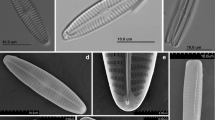Abstract
A series of recent studies have been completed by the authors involving: 1) determining the lethal tolerances of 12 oligochaete species classified (from ecological studies) as tolerant, moderately tolerant and intolerant to selected chemical toxicants and environmental factors under defined bioassay conditions with and without sediment; 2) determining lethal tolerances of candidate species to toxicants in combination with a range of abiotic factors; 3) measuring respiratory stress imposed by exposure to individual and combined sublethal concentrations of toxicants and environmental factors; and, 4) determining differences in lethal tolerance and respiratory stress between individual and mixed species. Surprisingly few previous studies have been done in this area considering the importance of oligochaetes as field pollution indicators. The results of the above major studies coupled with histopathological work are reviewed. Data from these studies substantiate the present use of oligochaete species assemblages as indicators of organic pollution and suggest their use in the laboratory for toxicant screening tests. The range of responses of different oligochaete species to individual and combined stress is complex, particularly in mixed species, which provides useful indications of specific stress factors. The application of these experimental laboratory studies to field situations is described.
Similar content being viewed by others
References
Bailey, H. C. & D. H. W. Liu, 1980. Lumbriculus variegatus, a benthic oligochaete, as a bioassay organism. In J. C. Eaton, P. R. Parrish & A. C. Hendricks (eds.), Aquatic Toxicology. ASTM STP707: 205–215.
Brinkhurst, R. O., 1980a. Production biology of the Tubificidae (Oligochaeta). In R. O. Brinkhurst & D. G. Cook (eds.), Aquatic Oligochaete Biology. Plenum Press, N.Y.: 205–209.
Brinkhurst, R. O., 1980b. Pollution biology — the North American experience. In R. O. Brinkhurst & D. G. Cook (eds.), Aquatic Oligochaete Biology. Plenum Press, N.Y.: 471–475.
Brinkhurst, R. O., P. M. Chapman & M. A. Farrell, 1983. A comparative study of respiration rates of some aquatic oligochaetes in relation to sublethal stress. Int. Rev. ges. Hydrobiol. 68: 683–699.
Chapman, P. M., L. M. Churchland, P. A. Thomson & E. Michnowsky, 1980. Heavy metal studies with oligochaetes. In R. O. Brinkhurst & D. G. Cook (eds.), Aquatic Oligochaete Biology. Plenum Press, N.Y.: 477–502.
Chapman, P. M., M. A. Farrell & R. O. Brinkhurst, 1982a. Relative tolerances of selected aquatic oligochaetes to individual pollutants and environmental factors. Aquat. Toxicol. 2: 47–67.
Chapman, P. M., M. A. Farrell & R. O. Brinkhurst, 1982b. Relative tolerances of selected aquatic oligochaetes to combinations of pollutants and environmental factors. Aquat. Toxicol. 2: 69–78.
Chapman, P. M., M. A. Farrell & R. O. Brinkhurst, 1982c. Effects of species interactions on the survival and repiration of Limnodrilus hoffmeisteri and Tubifex tubifex (Oligochaeta, Tubificidae) exposed to various pollutants and environmental factors. Wat. Res. 16: 1405–1408.
Chapman, P. M., G. A. Vigers, M. A. Farrell, R. N. Dexter, E. A. Quinlan, R. M. Kocan & M. Landolt, 1982d. Survey of biological effects of toxicants upon Puget Sound biota I. Broad-scale toxicity survey. U.S. Dept. Commerce, NOAA tech. Memo. OMPA-25, 97 pp.
Milbrink, G., 1980. Oligochaete communities in pollution biology: the European situation with special reference to lakes in Scandinavia. In R. O. Brinkhurst & D. G. Cook (eds.), Aquatic Oligochaete Biology. Plenum Press, N.Y.: 433–456.
Thompson, K. A., D. A. Brown, P. M. Chapman & R. O. Brinkhurst, 1982. Histopathological effects and cadmiumbinding protein synthesis in the marine oligochaete Monopylephorus cuticulatus following cadmium exposure. Trans. am. micros. Soc. 101: 10–26.
Author information
Authors and Affiliations
Rights and permissions
About this article
Cite this article
Chapman, P.M., Brinkhurst, R.O. Lethal and sublethal tolerances of aquatic oligochaetes with reference to their use as a biotic index of pollution. Hydrobiologia 115, 139–144 (1984). https://doi.org/10.1007/BF00027908
Issue Date:
DOI: https://doi.org/10.1007/BF00027908




